Introduction to HAT Format
HAT format was the period of competitive Yugioh lasting from the TCG release of Primal Origin on May 16, 2014 to the release of Duelist Alliance on August 15, 2014, comprising one YCS as well as that year’s WCQs and World Championship. HAT itself stands for Hand Artifact Traptrix, one of the top decks of the format alongside many others including Geargia, Infernity, and Mermail.
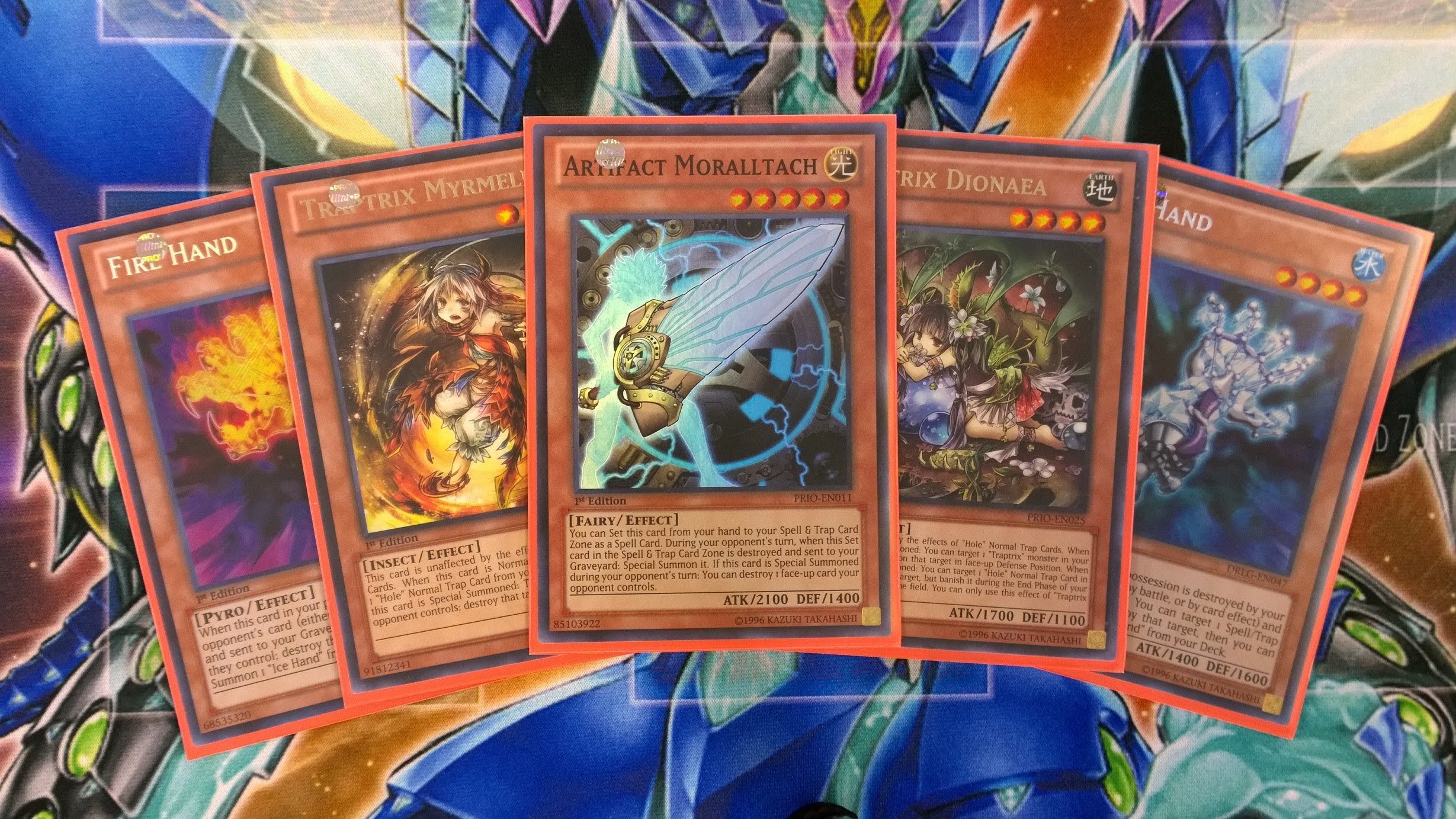
The format can be divided into three distinct periods: Early HAT, from the release of Primal Origin to the release of the Realm of Light structure deck on June 27; High HAT, from Realm of Light’s release to the implementation of the July 2014 F/L list on July 14; and Late HAT, the period of HAT played under the new Master Rule 3 from the July F/L list to the release of Duelist Alliance. This article will look at the events leading up to HAT format that caused the format to develop such hitherto unseen levels of deck diversity, as well as the early part of the format under which a single premier event, YCS Philadelphia, was hosted.
Origins of HAT Format
What was it that led to HAT format being so open and diverse in terms of viable decks, at both the premier and regional levels? To understand this, we have to go back to October of 2013. In May of 2013, the Dragon Rulers came to the TCG in Lord of the Tachyon Galaxy. The deck had dominated the TCG ever since. The September list intended to check Dragon Rulers had only made them more dominant by crippling their main contender, Spellbooks. The October 2013 list update contained only a single card, the newly-released Sixth Sense, which was quick-limited. More important than what it contained, though, was what its schedule signified for Yugioh.
The October list was scheduled to last until December 31, 2013. Starting January 1, 2014 a new list would go into effect. Lists from January 1 would thence be implemented every three months. This was a departure from the six-month periods that formats had traditionally lasted since the start of the TCG. This was intended to keep future Dragon Ruler-esque decks from running rampant in the TCG for extended periods. In practice, it meant that formats going forward would be much shorter and have less opportunity to grow stale. The higher frequency of banlists would provide constant metagame shakeup. Defiantly, the Rulers continued to dominate the TCG for the remainder of 2013. The limiting of every Dragon Ruler on the January 2014 F/L list finally killed the deck as a competitive force.
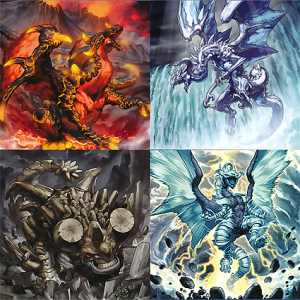
Early 2014
The demise of Dragon Rulers as a deck opened the way for others to compete once more. The first three months of 2014 were essentially a reversion to the Fire Fist-Mermail format of early 2013, with a decent competitive presence from Geargia, Infernity, and Bujins among others. The April 2014 F/L list addressed the top two decks with limits to Coach Soldier Wolfbark, Rekindling, and Mermail Abyssgunde, leading into a short early April 2014 mini-format where no deck established itself as the clear-cut best.
The release of Dragons of Legend on April 25 drastically warped this proto-format. This booster set introduced a host of new cards to the TCG with dramatic impacts on the metagame. Chief amongst them were Kuribandit, Wiretap, Fire Hand/Ice Hand, and especially Soul Charge. Soul Charge would immediately show its power in the TCG as Patrick Hoban piloted a Mythic Ruler deck to win the ARG Circuit Series Richmond on April 27. The card would go on to be so important and omnipresent in HAT format that many players argue to this day that the format should be known as “Soul Charge format". The metagame would remain stable for the next three weeks, until Primal Origin dropped with a bang on May 16. This was the beginning of HAT format proper.
Primal Origin and YCS Philadelphia
Primal Origin was the final booster set of the Zexal era, headlined by cover card Number 62: Galaxy-Eyes Prime Photon Dragon. Of more interest to competitive players, however, were a few other Ultra Rares in the set: Sylvan Sagequoia, Sylvan Charity, Madolche Anjelly, Artifact Ignition, and especially Artifact Sanctum. Other sought-after cards out of PRIO were Super Rares Artifact Moralltach, Sylvan Princessprout, and Cairngorgon, Antiluminescent Knight. There were also Rare Traptrix Dionaea, Common Artifact Beagalltach, and Secret Rare Orea, the Sylvan High Arbiter.
These cards gave an extra option to the omnipresent Rank 4 toolbox and offered a strong late-game play to the Traptrix engine. They also gave the Sylvan and Madolche decks the final pieces they needed to push them into the top tier, and most importantly brought the Artifact engine to the competitive fore. Artifact Sanctum would hold value at a steady $40+ throughout HAT format. The new deck strategies would get their trial by fire immediately. YCS Philadelphia began May 17, the day after PRIO was released.
YCS Philadelphia
1,410 players attended YCS Philadelphia, and Hand Artifact Traptrix was the hot new item going in. The results reflected a different view of the metagame, though. Hand/Artifact/Traptrix variants and hybrids managed a composite 9 spots in top 32. Geargia, however, accounted for 11 of the top 32, and Chris LeBlanc's Madolche deck was the overall winner.
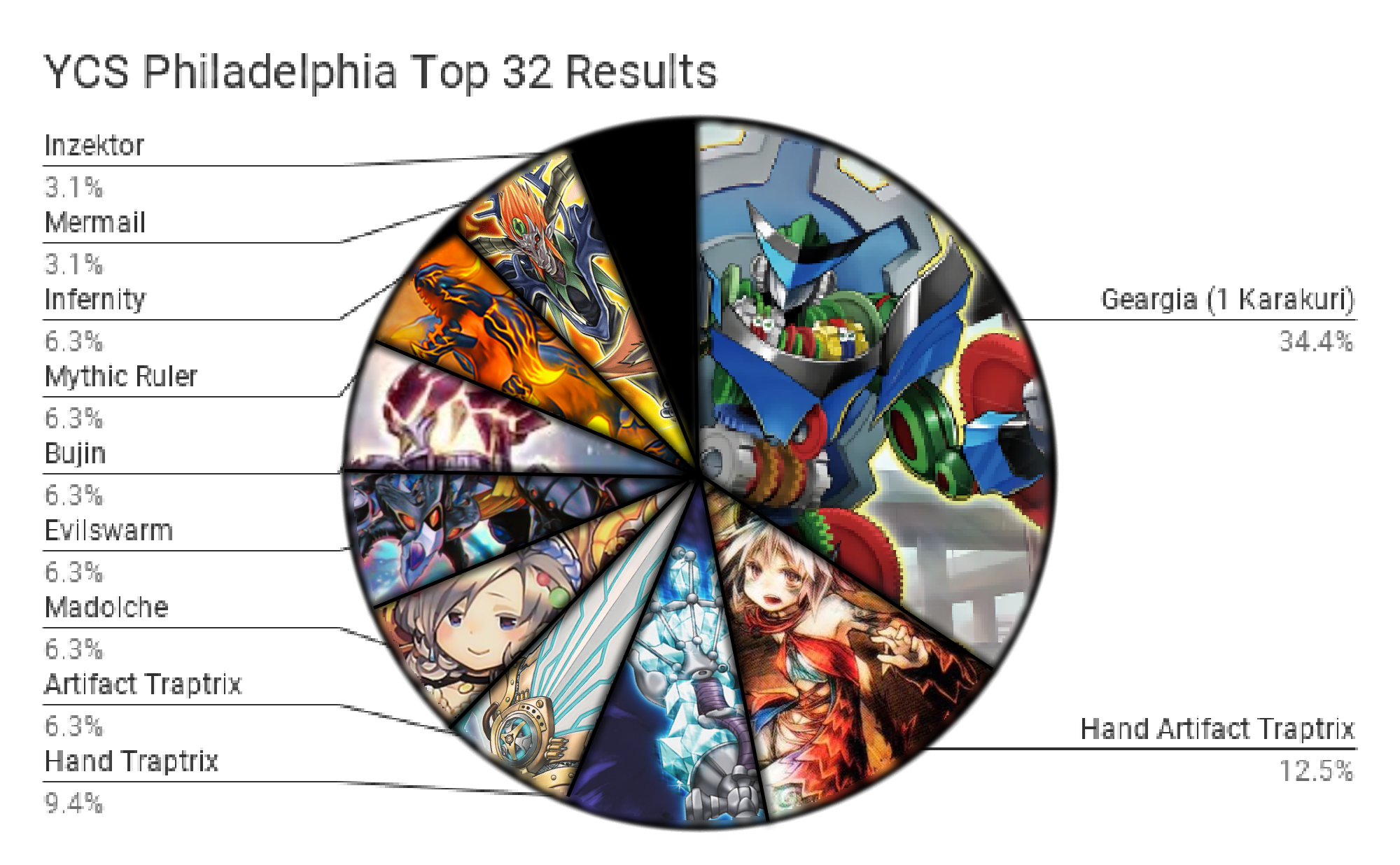
HAT decks at the time simply did not have a strong Geargia matchup. Geargiarmor was resistant to HAT’s main methods of disruption. The Hands struggled to produce value against Geargia’s heavy backrow and floaty monsters, and the less explosive HAT deck lacked an answer to the powerful end phase Geargiagear. HAT decks were also based on undeveloped theory so soon after the release of PRIO. Geargia, on the other hand, had been solidifying itself as arguably the best deck after the April F/L list. That said, YCS at the time were played with constructed decks only until top 16. From top 16 onwards, players drafted decks from Battle Pack 2: War of the Giants. The various World Championship Qualifiers would not involve draft in the main events.
YCS Philadelphia: The Rest
After Geargia and H/A/T variants, no other deck at Philadelphia managed to take more than 2 spots in the top 32. Madolche, Evilswarm, Bujin, Mythic Ruler, and Infernity each claimed 2 tops, while only a single Mermail and Inzektor deck snuck into top 32. Although the deck received significant boosts in PRIO, Sylvans did not live up to the hype at YCS Philadelphia. The deck failed to score a single top.
Early in the format, complicated combo decks struggled to find fertile ground against an undeveloped metagame. There had been little time to adjust to the significant shakeups brought on by PRIO. The simpler backrow-heavy strategies of Geargia and HAT proved more rewarding in an unknown format. However, HAT format had only just begun. Players drew on the lessons of YCS Philadelphia as they looked ahead to the WCQs beginning in late June.
Development of Early HAT
The YGO Open in Atlanta the week after YCS Philadelphia gave American players a further opportunity to develop and study the new meta. Hand Artifact Traptrix players put in a better showing at this event, with 5 of the top 16 spots going to the deck. Geargia managed only three, and a HAT deck piloted by Cory Davis defeated Brandon Wigley’s Geargia to take the event. The rest of top 16 was a smattering of Mythic Rulers, Bujins, Infernity, Fire Fist, and Harpies. HAT decks profited from the fact that most players, after the results of YCS Philadelphia, planned heavily for Geargia. Anti-Geargia cards like Mind Crush and Nobleman of Crossout were in abundance in side decks at the event.
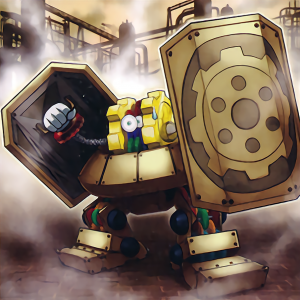
There was a lull in competitive play for the rest of May as players prepared for the WCQs next month. Konami did, however, hold three national championships in late May. HAT won two (Bolivia, Colombia) and Geargia won the third (Czech Republic). These national championships, along with the few regionals in May, also showed an interesting trend in the metagame. While large numbers of rogue decks had always been able to compete at the regional level, people were already starting to recognize the sheer openness of HAT format. It seemed that literally everything could compete. Decks such as Lightsworn, Scraps, Fire Kings, Ghostricks, and Chain Beat, while not necessarily threats at the premier level, were showing that they could snatch top eight finishes even at sizable regionals. Sylvans finally established themselves as a legitimate contender with a second-place finish at the Roanoke, Virginia regionals.
The Decks of HAT Format
This wildly open format continued on into June. There can be no “short” list of decks that at least managed top-eight finishes in Early HAT. Decks as diverse as Gladiator Beasts, Dark World, and Reversal Quiz won or fell just short of winning the various national championships across the TCG regions. Even so, the metagame began to coalesce around an admittedly large group of the cream of the crop.
The top tier roughly included Geargia, HAT, Infernity, Mermail, Bujin, Madolche, Mythic Ruler, and Sylvans. Fire Fist and Spellbook were arguably contenders as well. These decks were more powerful or more consistent than the rest of the crowd, scoring the majority of tops throughout Early HAT format, and winning most of the large events. At ARGCS Washington DC and Milwaukee, these decks took all but 2 of the 32 total tops.
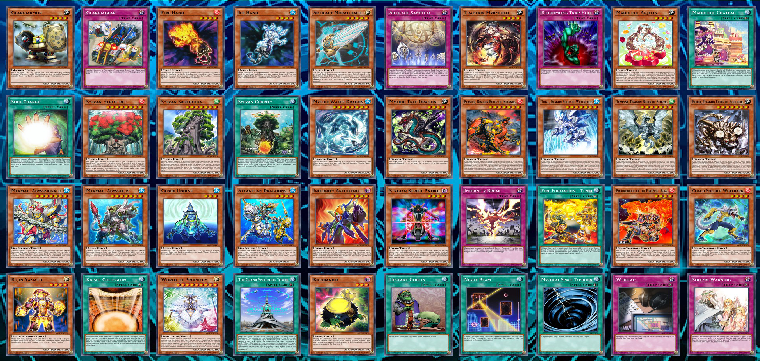
Format Diversity
What led to Early HAT being such a diverse format? Literally dozens of decks scored at least a couple top 8 finishes at the various smaller events of the format. Even amongst the recognized meta decks, there were 10 distinct strategies that were considered highly viable. Even amongst comparatively diverse past formats like Goat, Pre-Airblade, or Edison, nothing even approached the ridiculous levels of diversity in HAT. Geargia reigned due to its consistency and strong defensive lineup, but was far from overcentralizing or dominating. The deck was highly beatable due to its slow start and reliance on Geargiarmor/Geargiagear. HAT could and sometimes did beat it, but HAT was slow and did not easily gain advantage. Faster decks could quickly outpace it if it did not open sufficient defense.
The "lesser" meta decks of Early HAT had their own problems. Infernity theory was not yet adequately adapted to the heavier backrow format introduced with PRIO. Mermail was in much the same boat. Bujin was overreliant on Bujin Yamato and struggled to exert pressure if Yamato wasn’t sticking to the field. Madolche lived and died by its normal summon and was inconsistent in reaching its power plays. Mythic Ruler bricked like Shaq at the free throw line. Sylvans took a ridiculous amount of brainpower to play well and had not yet been refined into a consistent competitor. Fire Fist was incomplete as a full deck with Wolfbark and Brotherhood of the Fire Fist - Spirit limited. Spellbooks lacked a real power play besides the telegraphed and easily-disruptable World of Prophecy build.
The End of Early HAT
So many decks were strong enough to compete at a high level, yet each had glaring weaknesses that prevented them being defined as a clear best. These same weaknesses allowed rogue decks to steal low-level tops with high frequency. This was a culmination of the Zexal era’s design philosophy of creating decks at relatively the same power level, with few blowout cards and no all-around powerful decks. It led Early HAT to levels of diversity hitherto unseen in YGO.
Yet this diversity, in its current form, was not to last. On June 27, 2014- the day before the European World Championship Qualifier was set to begin- a new product was released in the Yu-Gi-Oh! Trading Card Game. This product would turn the power structure of the metagame on its head and usher in the era of High HAT format. This was Structure Deck: Realm of Light.




